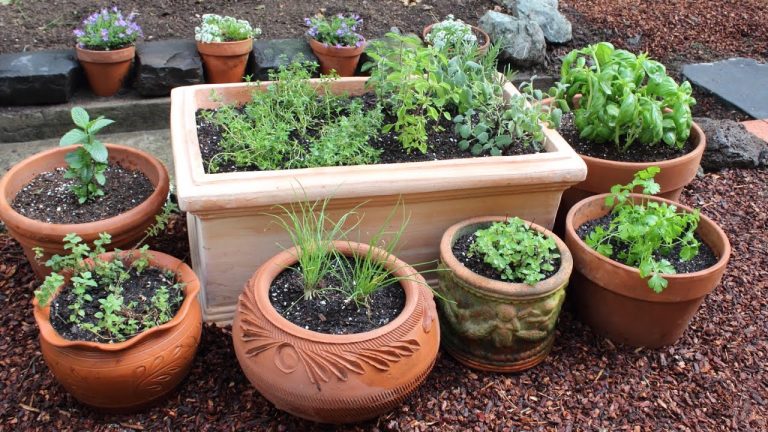Learn how to grow fresh, flavorful herbs year-round with this beginner-friendly guide. Whether you have limited space or no gardening experience, discover practical tips for cultivating aromatic herbs indoors or outdoors to elevate your cooking and enjoy a rewarding hobby.
Why Grow Your Own Culinary Herbs
- Freshness On Demand
Nothing beats the fragrance and flavor of fresh-picked herbs. Pluck a few basil or mint leaves and transform a simple dish instantly.
- Cost Effective
Store-bought herbs can lose potency quickly, and buying them week after week adds up. Growing your own provides a continuous harvest and reduces waste.
- Satisfying and Sustainable
Tending to living plants is rewarding and can reduce your carbon footprint. Many herbs thrive without harsh chemicals or excessive care.
- Customizable to Your Space
Herbs don’t require sprawling garden beds. A few sunny windowsills, a balcony, or a tiny patch outdoors is all you need.
Essential Herbs for Beginners
Start with easy-growing favorites that will add the most to your kitchen. Here’s a shortlist of popular culinary herbs ideal for novice gardeners:
- Basil
Essential for Italian dishes. Grows quickly and thrives in pots.
- Mint
Perfect for teas and desserts but keep it contained as it spreads vigorously.
- Chives
Mild onion flavor for salads, eggs, and potatoes. Extremely low maintenance.
- Parsley
Versatile and vitamin-rich. Curly or flat-leaf varieties work well.
- Thyme
Compact, aromatic, and excellent for stews and roasts.
- Oregano
Staple for Greek and Mediterranean cuisine, beautiful in small containers.
- Rosemary
Hardy and drought-tolerant with a robust, piney aroma.
Indoor Herb Gardening Basics
You don’t need a yard to grow herbs. Here’s how to make your indoor garden thrive:
Choose the Right Location
- Find the sunniest spot in your home. Herbs love light, ideally about 6 hours a day. South-facing windows often work best.
- If sunlight is limited, consider investing in an LED grow light.
Use the Proper Containers
- Select pots with drainage holes to prevent root rot.
- Opt for containers at least 6 inches in diameter to give roots room to grow.
Good Soil Matters
- Use a high-quality potting mix, not garden soil, for better drainage and aeration.
- Avoid overwatering; most herbs prefer soil on the drier side.
Regular Care
- Snip the tips of your plants frequently to promote bushier growth.
- Remove any dead or yellowing leaves to encourage healthy development.
Outdoor Herb Gardening Essentials
If you have outdoor space, take advantage of it! Here’s how:
Picking the Right Spot
- Choose a location with full sun for at least half the day.
- Ensure the area drains well; soggy soil is a no-go for most herbs.
Preparing the Bed
- Loosen the soil and mix in compost or aged manure to boost nutrition.
- For poor or clay-heavy soils, consider raised beds.
Sowing and Watering
- Some herbs (like dill or cilantro) grow well from seed, while others (rosemary, thyme) are easier to start from small plants.
- Water deeply but less often, allowing the soil to dry slightly between waterings.
Seasonal Considerations
- Most herbs are sun lovers, but some can handle partial shade, especially in hot climates.
- Protect delicate herbs from frost by moving potted plants indoors or using row covers in the garden.
Tips for Year-Round Harvest
- Stagger plantings for a continuous supply.
- Regularly harvest by pinching off leaves and stems—that actually encourages the plant to produce more.
- Consider growing perennial herbs (such as chives, thyme, and rosemary) for ongoing harvests year after year, which you can find at a plant nursery like those offered in Salt Lake City.
Troubleshooting Common Problems
- Leggy Growth
Usually a sign of too little light; move plants to a sunnier spot or upgrade to a grow light.
- Yellow Leaves
Often due to overwatering or poor drainage; check soil and pots for standing water.
- Pests
Aphids and spider mites are rare indoors but can appear; a gentle spray of water or insecticidal soap can help.
Creative Ideas for Herb Use
- Infuse oils and vinegars for custom salad dressings.
- Mix fresh herbs into butter or cream cheese for an instant flavor upgrade.
- Freeze chopped herbs in olive oil cubes for quick use in cooking.
- Dry or air-dry extra herbs for winter use.
Conclusion
Don’t wait for the “perfect” time to plant; start a few pots or a small outdoor patch today. The more you experiment, the better you’ll get at coaxing out those bright flavors and scents. Wherever you plant, tending your own herb garden brings life to your space and your kitchen—with a fresh supply of flavor, year round.

